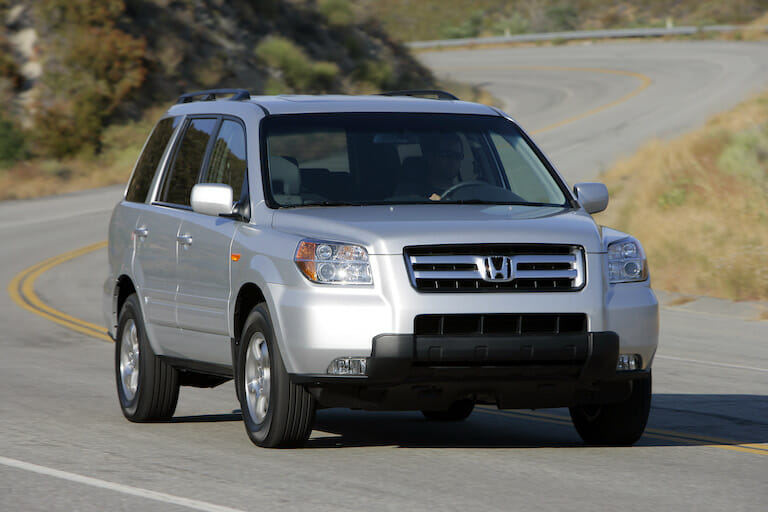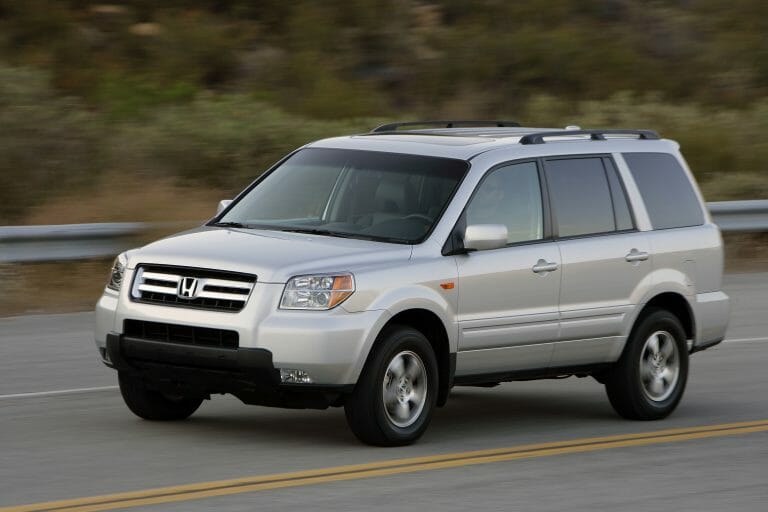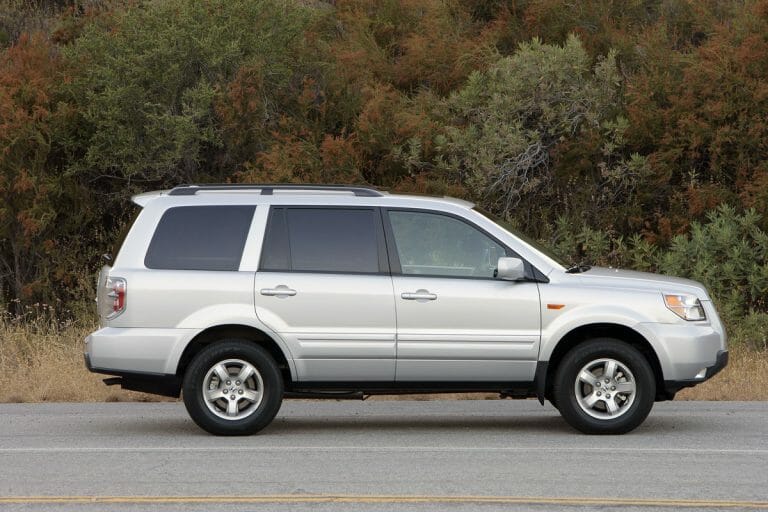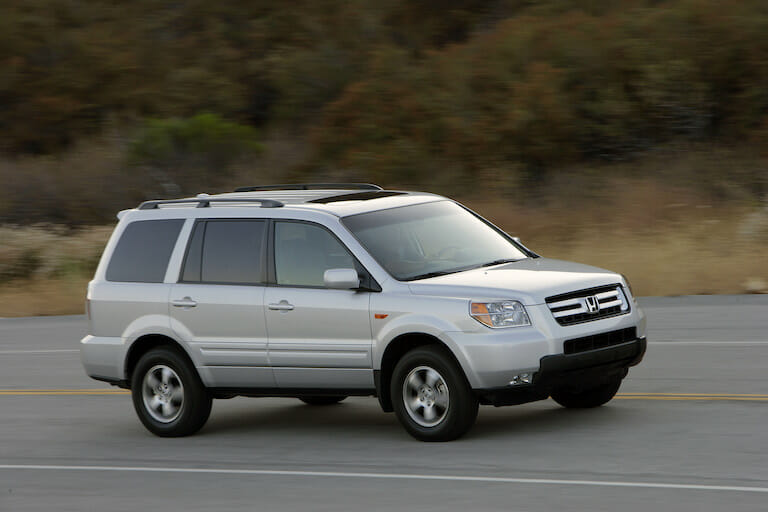With a 244-horsepower V6 taking care of propulsion, the roomy Honda Pilot should fulfill all utilitarian needs without much fuss. That said, earlier model years, especially 2007, had problems with airbags, engine failure, and electrical malfunctions.

Key Points
- The 2007 Honda Pilot has nine recalls, three investigations, and 185 consumer complaints registered with the NHTSA.
- Many recalls cover Takata airbag malfunctions, as do all three investigations. Consumer complaints largely focus on electrical failures, engine stalls, and structural flaws.
- Drivetrain issues are not uncommon in the 2007 Honda Pilot. The NHTSA has multiple reports of engine misfires, coolant leaks, unintended acceleration, and faulty timing belts.
- Structural problems include corrosion, rust, water ingress, and detaching seats, while headlight malfunction and faulty center console illumination are among common electrical issues.
2007 Honda Pilot Comes With Airbag Malfunctions and Faulty Interior and Exterior Lights
Although the 2007 Honda Pilot is an excellent midsize SUV, it’s not without problems. For instance, the National Highway Traffic Safety Administration has nine recalls against the 2007 model year. Six recalls pertain to the infamous Takata airbag recall. Per the NHTSA, long-term exposure to high heat and humidity causes the airbag inflators to explode, resulting in sharp metal fragments injuring the occupants.
Perhaps more worrying are the replacement inflators not deploying. Honda admits several of the replacement airbag inflators were installed incorrectly and failed to deploy in a crash. The automaker issued a separate recall for this in 2018, instructing dealers to inspect and replace the airbag module, if necessary.
Complaints about the Pilot’s headlights not working are available. Owners claim the headlights, specifically the low beams, turned off without warning while driving. Per one owner, the lights kept failing even after replacing the bulbs, indicating a manufacturing flaw, which Honda has yet to acknowledge.
The Pilot’s interior lights are also susceptible to failure; multiple reports confirm the center console illumination going out entirely. Owners find it unsafe to operate the climate control buttons at night since it requires turning on the dome lights and taking your eyes off the road.
Faulty power windows are another concern. Per this thread on Car Complaints, the windows drop at random and refuse to roll back up. The fix is not cheap and requires replacing the motor assembly. Apparently, Honda is aware of the problem but refrains from issuing a recall.

Many Owners Have Complained About Oil Consumption, Engine Stalls, and Unintended Acceleration In the 2007 Honda Pilot
Drivetrain issues are not uncommon in the 2007 Honda Pilot. The NHTSA has multiple reports of engine stalls, coolant leaks, and unintended acceleration.
Timing belt issues, misfire, and heavy oil consumption have also been reported. According to a thread from Piloteers, forum members reckon the misfire is likely due to old spark plugs and carbon buildup.
Technicians have found a leak inside the timing belt pretensioner, causing the belt to slip. Belt slippage is a common issue for the 2007 model year and can lead to expensive repairs if not addressed early.
Per the NHTSA, unintended acceleration is another problem, with owners noting the engine randomly revs and the vehicle jerks violently. A more concerning issue is the SUV braking on its own, which has to do with a faulty stability control forcing the vehicle to apply its brakes.
The problem was previously noticed in the 2005-06 Honda Pilot, and a recall was launched. But it seems the issue has been carried over to the 2007 model with no recalls as of yet.

2007 Honda Pilot Has Rust, Corrosion, and Problems with Detaching Seats
Structural issues are common, especially rust. Per the NHTSA, a couple of owners noticed the 2007 Pilot’s frame rusting away to the point where dealers suggested it’s no longer safe to drive the vehicle.
Water seems to get in and destroy the front floorboards when driving in inclement weather. Accounts of water ingress forming puddles and causing the foot controls to become slippery are also on record.
Certain Honda Pilots have seats that rock back and forth. According to owners, the front driver seat detaches from its brackets and moves around, posing a serious safety risk.
Tires can be problematic too. Multiple reports are available with the NHTSA claiming tires develop cracked sidewalls and burst prematurely. Also, the Goodyear OEM tires have problems maintaining traction and seem to hydroplane when driven over standing water.

A Used Honda Pilot Offers Exceptional Value, and That’s Despite the Complaints on File
Regardless of the problems, we’d still recommend buying the 2007 Honda Pilot. Of course, the safety risk of an airbag malfunction is a bit disconcerting.
However, it’s unlikely to be a concern since recalls began years ago, so the faulty items should be replaced by now. Also, most of the other complaints are minor and aren’t worth worrying about too much.
Understand that Honda sold hundreds of thousands of Pilots in 2007, and only 185 odd customers found it problematic.
The 2007 Honda Pilot is, without doubt, a reliable and fairly affordable midsize SUV. Especially considering Kelley Blue Book values are as low as $6,600.
Photos: Honda
